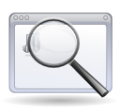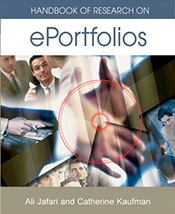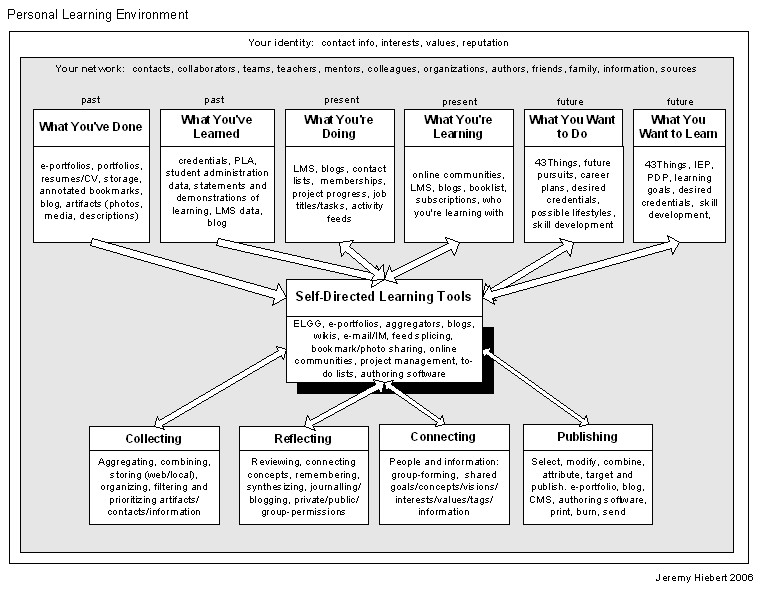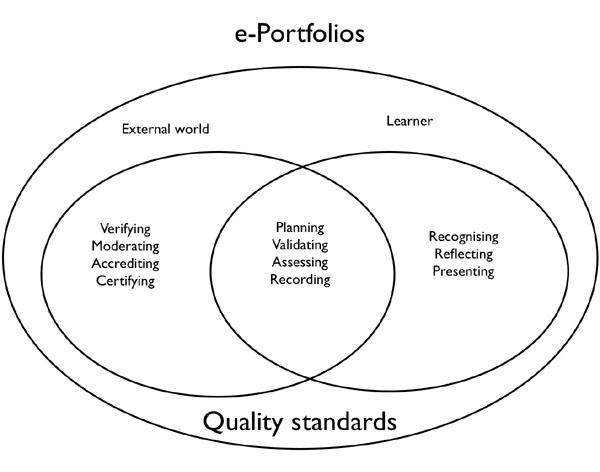MOSEP foundation module/session 1
![]() Digg this
Digg this
![]() Post to del.icio.us
Post to del.icio.us
![]() Post to Furl
Post to Furl
![]() Post to Magnolia
Post to Magnolia
![]() Post to Yahoo
Post to Yahoo
 |
More self-esteem with my e-portfolio: Foundation Module Discovering the power of e-portfolio |
|
After this session the participant will be able to :
|
|
After this session the participants
|
The ePortfolio method and different purposes
In recent years, the interest, work and research on the ePortfolio method and the number of tools for ePortfolios has grown constantly. More and more books, reports and articles about the method and experiences are published. Following, we introduce in origins of the concept, definitions and important processes of the e-portfolio method.
Introduction and definitions
According to the EduMedia Group from Salzburg Research, the following remarks can be made about the origins of the ePortfolio method (c.p. Schaffert, Hornung-Prähauser, Hilzensauer & Wieden-Bischof, 2007, E-Portfolio-Einsatz an Hochschulen: Möglichkeiten und Herausforderungen, http://www.scil.ch/publications/reports/2007-03-brahm-seufert-next-generation-learning.pdf , p. 76; referring to Häcker 2006):
The term "portfolio" based on the Italian term "portafoglio", consisting out of "portare" (carry) and foglio (paper/page). As a learning and teaching method, the goals of portfolio work are the documentation and support of the learning processes, of learning results and of competencies. Elements of the portfolio method can be found in reformist pedagogical approaches such as the school journals of Celestin Freinet or the year project work following the ideas of Rudolf Steiner.
If electronic support or media is used for the development, documentation, administration or presentation of portfolios, it is called "e-portfolios", "electronic portfolios", "digital portfolios", or "webfolios" (a web-based portfolio).
When defining e-portfolio, one discovers that different definitions exist. For example, Helen Barrett, a famous supporter of the e-portfolio method, says:
e-portfolios could be defined as “a purposeful collection of student (or teacher) work that illustrates efforts, progress, and achievement in one or more areas over time. An electronic portfolio uses digital technologies, allowing the portfolio developer to collect and organize portfolio artifacts in many media types (audio, video, graphics, text). A standards-based portfolio uses a database or hypertext links to clearly show the relationship between standards or goals, artifacts, and reflections. The learner's reflections are the rationale that specific artifacts are evidence of achieving the stated standards or goals. An electronic portfolio is a reflective tool that demonstrates growth over time." (Barrett, 2004)
In Wikipedia the following definition is used: An electronic portfolio, also known as an e-portfolio, or digital portfolio, is a collection of electronic evidence (artifacts, including inputted text, electronic files such as Word and PDF files, images, multimedia, blog entries and Web links etc.) assembled and managed by a user, usually online. ePortfolios are both demonstrations of the user’s abilities and platforms for self-expression, and, if they are online, they can be maintained dynamically over time. Some ePortfolio applications permit varying degrees of audience access, so the same portfolio might be used for multiple purposes. ( "Electronic Portfolio" , 2007-06-12)
Even though many different definitions of ePortfolios are being used, they all focus on a process that:
- focuses on learning products and learning processes
- uses ICT
- supports self-directed learning, its planning, documentation and reflection, and
- includes the opportunity for an authentic and holistic approach of assessment.
Literature:
|
Different purposes of ePortfolios
There are different purposes for ePortfolio, e.g. presenting achievement, a tool for active learning, a tool for professional or career development planning (PDP or CDP) or as an assessment tool.
Barrett & Carney (2005) distinguish:
- Portfolios for Accountability: "Portfolios are considered products, and are evaluated summatively to hold teacher candidates accountable for demonstrating particular levels of achievement."
- Portfolios for Learning: "This type of portfolio is primarily a device for teacher and learner to assess skills, reflect upon one’s learning, and establish new learning plans. The emphasis is on process rather than product, and assessment is formative in nature."
- Portfolios for Marketing: "A portfolio assembled to showcase one’s best work for employment or other promotional purposes is primarily a marketing device."
(Barrett, H. & Carney, J. (2005). Conflicting Paradigms and Competing Purposes in Electronic Portfolio Development. http://electronicportfolios.org/portfolios/LEAJournal-BarrettCarney.pdf, 2006-12-12)
Zeichner & Wray (2001) have produced a useful list of the issues and decisions which need to be made about why to construct a portfolio, how to go about it, what to include, and what happens after it is completed. These include:
- What is the purpose of the portfolio: for learning, for assessment, for professional development, or for employment reasons?
- Who decides what should be included in a portfolio: the student compiling the portfolio, or the people for whom it is being created? How prescriptive should guidelines for creating a portfolio be?
- How should the pieces of evidence in the portfolio be organised: around themes chosen by the student, around programme goals, or around achievement standards?
- What kinds of artefacts are acceptable as pieces of evidence? What should, and should not, be included in the portfolio?
- What kind of input should tutors, lecturers and peers have throughout the process of constructing the portfolio? Should there be a lot of involvement, or just a little?
- How frequently should students be expecting feedback on their progress?
- How should the portfolio be assessed: through very specific evaluation criteria and grading rubrics, or a more general pass-fail system?
- What should happen to the portfolio after it is finished: should there be some kind of public acknowledgement or presentation of students’ work?
(Source: Zeichner, K., and Wray, S., (2001). The teaching portfolio in US teacher education programs: what we know and what we need to know. Teaching and Teacher Education, 17 (2001), 613-621.)
The electronic portfolio is based on two organizing documents: learner’s collection of artifacts and learner’s reflections on meeting his/her outcomes, goals or standards.
Your Résumé (CV) area should be divided into two sections:
- general information
- experience & accomplishments.
|
Video podcasts, providing and over view of ePortfolio developments, recorded at the MOSEP Krakow conference, May 2007:
|
|
The ePortfolio processes
Below you find an overview about different processes which Jeremy Hieberts extracts as important for portfolio work.
Several stages learners would need to go through if they were using an ePortfolio to help them. They would:
- identify what they need to learn
- review evidence that they have already stored
- identify the evidence that they need to demostrate their competence or learning
- think about when they might be able to collect the evidence that they need
- think about how, and what would be the most appropriate methods that they would need to use to capture and record the required evidence
- design an action plan that details what it is that they will need to do or organise that will provide them with the evidence generating opportunities that they need. The plan will also identify how and when they are going to capture the evidence.
- do whatever they need to do and make sure that the evidence is recorded
- link the new evidence into the ePortfolio in such a way that it can be to retrieved and presented efficiently
- reflect on their learning and achievements
There are other ways to differentiate processes.
| Watch this Presentation: [the ePortfolio Process ]and look at the picture below.
Discuss in your group these questions:
|
Construction of an e-portfolio
A useful list of the issues and decisions which need to be made about why to construct a portfolio, how to go about it, what to include, and what happens after it is completed is the following (Source: Zeichner, K., and Wray, S., (2001). The teaching portfolio in US teacher education programs: what we know and what we need to know. Teaching and Teacher Education, 17 (2001), 613-621.)
- What is the purpose of the portfolio: for learning, for assessment, for professional development, or for employment reasons?
- Who decides what should be included in a portfolio: the student compiling the portfolio, or the people for whom it is being created? How prescriptive should guidelines for creating a portfolio be?
- How should the pieces of evidence in the portfolio be organised: around themes chosen by the student, around programme goals, or around achievement standards?
- What kinds of artefacts are acceptable as pieces of evidence? What should, and should not, be included in the portfolio?
- What kind of input should tutors, lecturers and peers have throughout the process of constructing the portfolio? Should there be a lot of involvement, or just a little?
- How frequently should students be expecting feedback on their progress?
- How should the portfolio be assessed: through very specific evaluation criteria and grading rubrics, or a more general pass-fail system?
- What should happen to the portfolio after it is finished: should there be some kind of public acknowledgement or presentation of students’ work?
Enablers and barriers of ePortfolio
Watching the videos and reading this introduction to the portfolio method, one can easily imagine, that it does not fit to a traditional teacher centred model of learning: The learner is in the focus of the method and he/she is viewed as an active, self directed and self responsible learner. Teachers also get new roles as tutors and coaches, supporting the planning and reflection of learning processes. The portfolio method has direct and indirect influence in the learning culture. There are severals enablers and barriers for the portfolio method, e.g.
- concerning to the possibilities of learning standards and curricula,
- assessment affordances and rules,
- knowledge and competencies of the teachers as portfolio-coach,
- the ICT equippment and knowledge of teachers and learners,
- the existing learning culture, or
- support in the faculty and school.
|



